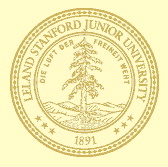
Global Perspectives on Human Language:
The South African Context
Lizet Ocampo
Updated 9-19-2004
1948- The Nationalist Party required that Afrikaans and English become the language of instruction in schools. The Party also reintroduced Christian National Education as the guiding philosophy of education.
Christian National Education enforced that ethnic identity defined one's social responsibility and opportunities.
1948- There were ten government-subsidized institutions of higher learning: four with classes taught in English; four with classes taught in Afrikaans; one bilingual correspondence university; and the South African Native College at Fort Hare, in which other languages were permitted. All four Afrikaans speaking schools and one English speaking one admitted white students only. Others admitted all students, but blacks and coloured were limited in what they could study and some classes were segregated.
1953- The Bantu Education Act widened the gaps in educational opportunities for it limited the educational opportunities for blacks to those of labor. The act also eliminated financial aid to religious high schools and forced many to close down. Churches had many schools for blacks.
1959- The Extension of University Education Act prohibited established universities from accepting black students, except with the special permission of a cabinet minister. The government opened universities for black, coloured, and Indian students, and they could only attend white universities when these schools became overcrowded.
1970- Per capita government spending on black education slipped to one-tenth of spending on whites in the 1970s. Black schools had inferior facilities, teachers, and textbooks.
1976- Soweto deaths of 575 occurred on June 16 th . Students took to the streets of the Johanessburg township of Soweto to protest the regulation that half of high school classes must be taught in Afrikaans. There were 134 deaths of children under the age of eighteen. "Liberation before education" became the phrase for ANC supporters that took to military training to protest apartheid education.
1978- Only 20 percent of all university students in South Africa were black even though they were the overwhelmingly majority of the population.
1984- National Policy for General Affairs Act gave the minister of national education authority to determine general policy for syllabuses, examinations, and certification qualifications in all institutions, which provided some improvements for black education, but it was hard to administer since education was decentralized since there were departments segregated by race and homelands had their own departments of education.
1986- Negotiations between President P.W. Botha (1984-89) and Nelson Mandela of the ANC began to narrow the gap of funding for education between racial groups.
1993- President Frederik W. (F.W.) de Klerk gathered together leading experts on education in the National Education and Training Forum to formulate a policy framework for restructuring education.
1995- All government-run primary and secondary schools were officially integrated. Policies, such as compulsory schooling for all from age 7-16, attempted to be racially neutral, but there was a lack of resources to provide adequate schools and teachers. The government provided salaries for teachers only, and schools had to charge fees for equipment and supplies.
Mid 1990s- South Africa had twenty-one major universities, which are government-financed and open to students of all races. Fifteen technikons , 128 technical colleges, and seventy teacher-training colleges are also available.
http://countrystudies.us/south-africa/56.htm